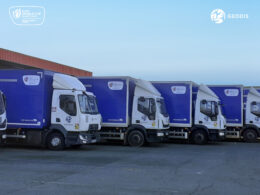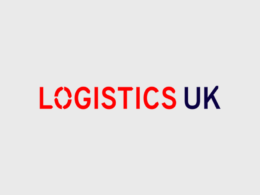While the biggest eCommerce giants are steaming into the market with super-fast deliveries, thanks to their massive fulfilment centres and in-house delivery teams, small retailers and shippers are wondering how to compete. In an era of three-hour delivery windows, diverse supply chains and mobility sharing, more businesses are finding themselves at a crossroads when deciding between in-house or outsourcing transportation requirements.
Small businesses understand that offering same-day deliveries isn’t an optional “deal sweetener” any more – it’s a necessity for their survival. This means they’re constantly looking for ways to better manage their operations, leveraging the power of technology rather than market share and financial clout.
A Need for Better Operations Management
So, why is all this happening? Consumers are demanding faster deliveries – they want the benefits of high street shopping without the effort, and the flexibility to make last-minute purchases online. Whether it’s Christmas or a birthday celebration – consumers are looking towards online retailers to get them out of an “eleventh-hour” strife.
And therein lies another issue, retailers need robust delivery operations to meet consumers’ delivery expectations during peak trading periods. The convoluted processes, unreliability, and expense of traditional courier solutions simply don’t cut it. This leaves finding the right fleet operation as the remaining solution.
On one side, there’s in-house, private fleets which provide businesses with stable capacity and control over their transportation costs. On the other side, private fleets can be costly in regards to vehicle costs and increased liability of goods and accidents. If operating a private fleet is not a main-priority for the business, outsourcing a dedicated fleet may be a more suitable option.
Although, with a disrupted landscape now influencing the courier and transport industry, outsourced dedicated and in-house private fleets aren’t mutually exclusive. Businesses are now taking multiple approaches to managing and moving their freight, one approach being implementing a “blended” operation.
The Blended Fleet Solution
The problem with having a large team of in-house delivery drivers is that they quickly become too costly for SMEs who experience peaks and troughs of trade. A full team of delivery drivers capable of providing consistently fast deliveries only really works when delivery volumes are always high.
While it may seem easier for SMEs and retailers to completely outsource their deliveries, private fleets deliver serious cost and service advantages when deployed properly, at an appropriate size. Businesses are now building their private fleets to cushion against tight capacity and becoming external carriers themselves by selling backhaul loads to reduce their operating costs.
Subcontracting delivery drivers alongside owned, private fleets gives businesses greater flexibility to adjust workforces according to demand and the volume of orders received. What’s more, this blended fleet means delivery workforces can be quickly adjusted by area – which means businesses find it much easier to scale where there are areas of increased demand.
Blended models have proven successful for $34 billion food and beverage giant, Kraft Food. Kraft is a well-known advocate for blended fleet models, using both private and dedicated carriers to service their business. With a refined transport operation, the food titan considers a number of factors, including shipment type, length of haul, service requirements and projected cost to determine the most appropriate mode for its freight — all the while, benchmarking them against each other.
While a group like Kraft may use a private fleet for local deliveries and dedicated contract fleet for moving freight from distribution center to store or long-haul inbound raw materials; different forms of freight transportation can be justified for different businesses. An online fashion retailer, for example, may find it best to use a private fleet for their ongoing operations of relocating stock and moving inbound raw materials, while outsourcing a fleet of dedicated drivers for last mile logistics — allowing the business to easily scale with demand without breaking the bank, and ensuring accountable deliveries and customer satisfaction.
Regardless of what blended fleet operation businesses may choose, there now exists a variety of models that are a combination of outside carriers and in-house fleets, it is no longer an either-or landscape.













